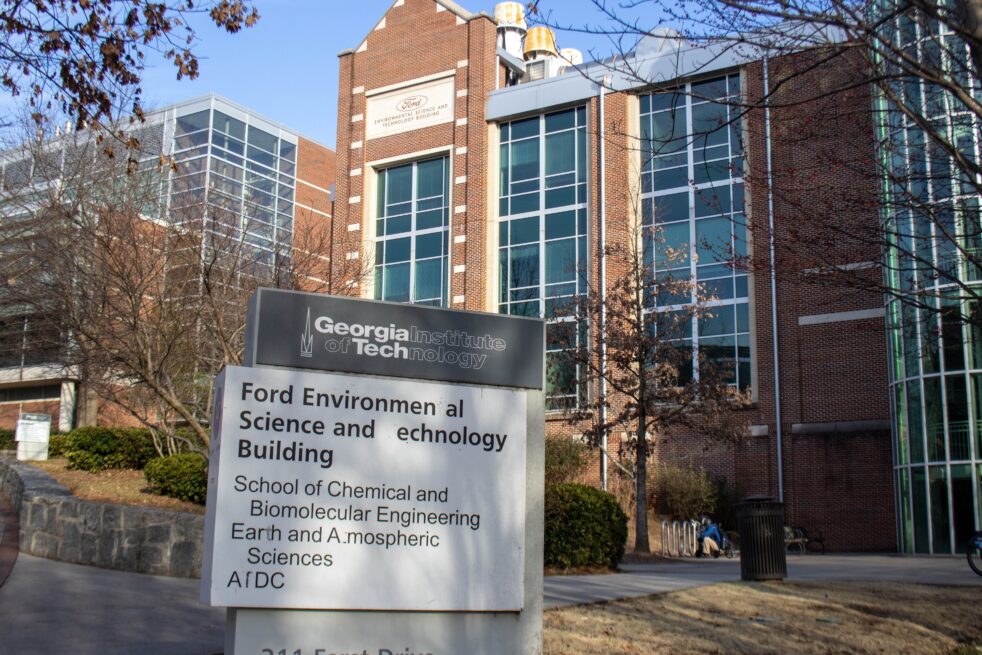Beginning this upcoming summer term, Tech’s School of Earth & Atmospheric Sciences (EAS) will offer three new Bachelor of Science degrees. These undergraduate opportunities will expand the breadth of the EAS program while simultaneously allowing students in the program to develop a more specialized plan of study in a field that aligns with their interests.
The University System of Georgia (USG) has approved two new degrees within the school: Atmospheric and Ocean Sciences (AOS) and Solid Earth and Planetary Sciences (SEP). They also approved a new bachelor’s degree in Environmental Sciences (ENVS) that will be an interdisciplinary degree between EAS and the School of Biological Sciences (BIOS).
Currently, the School offers one general degree with different track options for all students, but they will likely remove this as an option for new students in two years. Each of these degrees builds upon the existing tracks to form a more in-depth plan of study, catering to increasing academic and professional demand in their respective subjects.
The new ENVS degree significantly differs from the preexisting track, as it will provide a more holistic approach to environmental science.
Andrew Newman, EAS professor and undergraduate coordinator, says that “as with all of the new majors, the ENVS degree will align moderately with our prior EAS track, however there is more required coursework, including courses offered within biosciences, as this new degree is well integrated between the ecological side of [BIOS] and the environmental of EAS.”
Newman also said that “while there is more specifically required coursework than before, this will remain a relatively flexible degree where students may develop in one of three possible pathways (or some mixture between). These include Environmental Quality and Health, Climate Change and Sustainability, and Ecosystem Management and Conservation.”
Newman added that the degree will also expand to require some policy-related courses and a capstone course in Environmental Field Methods.
The expansion of this program draws on Tech’s environmental science and ecology expertise both inside and outside of EAS, better preparing students to address the quickly growing demands of the environmental sector.
The AOS degree will grow from the existing meteorology track to cover disciplines spanning atmospheric sciences, oceanography and climate sciences.
The program develops a multi-faceted approach to weather analysis that accommodates the effect of climate change on the Earth’s coastal systems. EAS has aligned the program with American Meteorological Society (AMS) recommendations and prepares students to complete a variety of related certifications necessary for careers in the weather field.
According to the AMS, meteorology graduates find employment in a multitude of related fields that all require unique skill sets, and the AOS program will compensate for this. Its expansion to include computation-heavy classes will equip students with skills that are highly sought after in “… private and government sector opportunities spanning aviation, agriculture, finance, insurance, energy, industry, software development, ‘big data’ positions, supply chain positions, the military and K-12 teaching,” according to the AOS webpage.
Building upon the Earth Science track, the SEP degree explores the interior processes of Earth and other planets.
The SEP takes advantage of innovative technology to provide students with some of the most advanced planetary research opportunities the discipline offers. Newman mentions a specific course that will become a major requirement for SEP.
“Last year [they] taught a new capstone course in Geophysical Field Methods, in which students learn a large range of tools that solid earth sciences use for understanding the surface and interior of a planetary body. Students work both at Georgia Tech and in the field in Southern California, using tools like seismometers and geophones, ground penetrating radar, GPS for ground deformation, electromagnetic methods and field mapping,” Newman said about the additional class.
The feedback from current EAS students is very positive, and many are enthusiastic about the opportunity to pursue their passions. Angela Jackson, a third-year EAS, shares her thoughts on the new degree plans.
“Overall, I’m excited and happy for the split. Now [the subjects] can all shine in their own light instead of sharing one umbrella. EAS is hiring new faculty and adding classes to differentiate [itself] into three divisions, which allows us to specialize in our respective fields. I still hope each major shares core classes, as they’re all interdisciplinary fields,” Jackson said.
“Earth & Atmospheric Sciences with a concentration in Solid Earth Sciences’ is a mouthful to begin with, and normally I just shorten it to ‘earth science’ anyway because that aligns with my concentration. It’ll be much easier to say [SEP] and not have to explain any further because it already reflects what I’m studying,” said Hailey Bos, first-year EAS.
Tech and the School are excited to transition to these programs in the coming months and look forward to seeing how students will take advantage of the new opportunities offered. Allowing students to explore different paths in EAS more in-depth will provide them with a chance to pursue their specific interests early.
For more information regarding the new EAS degrees, visit their respective designated pages on the School’s website, eas.gatech.edu.
